This is not a facelifted Boxster, Porsche stresses. To underline the fact that we’re looking at a new generation machine, the good people of Zuffenhausen have affixed three digits to where there was none before – say hello to the Porsche 718 Boxster.
Break that down and ‘seven eighteen’ is the model name while ‘Boxster’ denotes the bodystyle, like how a 911 with a targa top is called 911 Targa. Coming soon is the 718 Cayman, which will officially merge with the Boxster to become one model line with two bodystyles – coupe and roadster. Porsche hopes that ‘718’ will in the future roll off the tongue as easily as ‘911’. Someday perhaps, but not now.
The 718 Boxster replaces the 981 that made its debut in 2012. Four years on, the timing points at a facelift, but you know it’s no normal mid-cycle refresh when it comes with a completely new body (only the windscreen, soft top and luggage compartment lid have been carried over) and fresh engines.
The latter is of course the big news here – gone are the six-cylinder naturally aspirated engines that have powered the Boxster for two decades, and in comes the inevitable four-cylinder turbo engine. No one is immune from the downsizing bug, not even Ferrari, but can the company known for its flat-six sports cars make the most of this enforced change? Is the Boxster still the best roadster in town without its much-loved NA engines? We seek answers in Portugal.
Four cylinders so not Porsche? Not so, says Porsche. Seven eighteen isn’t just a random set of numbers or the lock combo of Matthias Müller’s Rimowa, but it’s there to provide the heritage link for this new model.
The old timer being referenced here is the Porsche 718 race car from the late 1950s, the successor to the famous Porsche 550 Spyder that partly inspired the original Boxster. The 718 association was previously used for the 1,960-unit limited edition Boxster RS 60 Spyder in 2007.
The 718 RSK started with a 1.5 litre flat-four engine with 142 hp, mounted in the middle of a roadster body, just like today’s Boxster. The “Fuhrmann” motor was then upgraded to 160 horses from 1.6 litres, as found in the 718 RS 60 Spyder from 1960 that Porsche brought to the 718 Boxster’s press launch in Ota, 50 km north of Lisbon. We showed you the Targa Florio-winning museum piece in detail last week.
Speaking to 718 model line director Jan Roth and boxer engine development manager Markus Baumann, they admit that Porsche is embracing downsized four-cylinder turbo engines because the objectives of increased power and better fuel consumption is simply not achievable via the naturally aspirated route. But when there’s an old car with the same basic ingredients in the past catalogue, why not invoke the heritage and romance it brings? No harm, we think.
The links are nice to have (future 718 owners, take note and rehearse), but it’s not that the new boxer engines can’t stand on their own two mounts (one more than before). In fact, they blow away the old six-cylinder engines with brute turbocharged force.
The 2.0 litre flat-four turbo that powers the 718 Boxster has 300 hp and 380 Nm of torque from 1,950 to 4,500 rpm, which is 35 hp and 100 Nm (yes, one hundred newton metres) up from the naturally-breathing 2.7 litre flat-six employed in the base 981.
The 718 Boxster S uses a 2.5 litre flat-four turbo with 350 hp and 420 Nm of torque from 1,900 to 4,500 rpm. That’s 35 hp and 60 Nm more than the old Boxster S’ 3.4 litre six-pot engine despite being nearly a litre down on capacity. The larger bore 2.5L unit in the S comes with variable turbine geometry (VTG) turbo, just like in the 911 Turbo. Yes, your neighbour’s smelly pick-up truck has it too, but Porsche is still the only manufacturer to use VTG technology in production vehicles with petrol engines.
The new engines for the 718 series are closely related to the 3.0 litre flat-six twin-turbo units found in the latest facelifted 911, and they share many parts and ancillaries, but the flat-fours feature a single turbo (more effective in this application) and what Porsche calls indirect intercooling.
The air intakes behind the doors (larger now, with two louvres) provide process air and now air for indirect intercooling as well. Temperature is reduced by an auxiliary loop of the cooling system, which involves the use of a heat exchanger above the engine. Here, the compressed air from the turbo gives off some of its heat to the circulating coolant. The liquid then flows through one radiator per air intake.
We won’t be exaggerating by calling the gains monumental, especially when the outgoing engines were considered by many as the best of its kind. It’s verified by the stopwatch, which records 0-100 km/h in 4.7 seconds for the 718 Boxster, which has a top speed of 275 km/h. That’s 0.8 seconds and 11 km/h faster than before. Same with the new S, which stops the clock at 4.2 seconds (six tenths faster than before) and has a Vmax of 285 km/h (8 km/h up, quoted times with PDK and Sport Chrono options).
What about the other objective? Despite the massive power and speed gains, the new Boxsters are up to 13% more fuel efficient, making it a win-win for the opposing parameters. To be exact, the new Boxster PDK is rated at 6.9 litres per 100 km in the NEDC, which is 0.7 litres less than before. The new S’ 7.3 l/100 km is a 0.9 l/100 km improvement.
As before, Porsche gives the option of a six-speed manual gearbox and a seven-speed Porsche Doppelkupplung dual-clutch automatic. The latter has an auto start/stop function that shuts off the engine when the car is coasting to a stop.
Another fuel saving method is what Porsche calls “virtual gears”. When driving at a constant speed, PDK chooses the highest possible gear, but to stabilise revs and prevent jolts due to running at too low revs, the clutch of that gear is disengaged slightly to allow a slight amount of slip. Sounds clunky, but you won’t feel it working.
What we did feel is a four-cylinder engine that’s as burly as they come. Twist the key (yes, the classic way) and the boxer unit rumbles into life and settles into a deep grumble. It’s quite an occasion, starting up, and there’s an impression of something big lurking behind you, a feeling that remains as you drive, and push, the 718 Boxster.
Rolling off from our hotel into the morning traffic revealed that; although the bassy sound produced by the 2.5L motor isn’t antisocial or even disruptive to conversations and typical in-car life, it’s there in normal driving, which is probably the way it should be for a sports car that will be priced way north of half a million ringgit when it arrives in Malaysia.
In normal mode, the 718 Boxster S plays commuter very well; the PDK steadfast to its mission of cruising at the highest possible gear, shuffling through the pack in a fast but imperceptible manner. The constantly changing numbers in the little window within the tachometer tells you that the transmission is doing its thing, but like the best full backs in football, it’s quick and overlaps smoothly.
Response to your right foot isn’t the most immediate, but that’s wholly intentional on Porsche’s part – no one wants a jumpy car in normal driving. Well, maybe some like that idea of “sportiness”, which is why we occasionally find overly-sensitive throttles in regular cars. But fear not, because Sport mode significantly alters the 718’s behaviour.
Selected via a rotary dial below the steering’s right spoke, Sport mode turns up the volume and sharpens the drivetrain’s response. The PDK abandons its efficiency quest and gets to business, shifting crisply and holding on to gears in a very natural manner – the Porsche never feels like like an eager dog on a leash. Sounds like a hot hatch? Not too far off, replete with drama-enhancing pops on the overrun.
Then you step on it, and boy the new Boxster S is quick; the impression of speed greatly enhanced by the wave of torque that initially feels alien in this car. The turbo effect is pronounced, perhaps even more for those who have sampled previous Boxsters or Caymans. The young and upwardly mobile set, should they be upgrading from a hot hatch or sports sedan, would feel more at home – lest we forget, downsizing isn’t a new phenomenon and it’s amazing that Porsche has held out this long.
The brand’s new conquests would however find the Boxster’s 7,500 rpm redline intriguing and addictive. Very high for a turbo engine and just 300 revs lower than the old flat-six’s max speed, it was great fun extending the motor; process aided by long gearing that one won’t normally associate modern turbo-fours with. It’s in a different weight class, but this revvy turbo reminds me of the Ford Fiesta ST’s perky little engine.
Our tester had a sports exhaust system that can be activated via a button on the centre console. It amplifies the engine sound to quite hilarious levels, especially at high revs, and is a showoff option that this writer personally wouldn’t tick. Does the new turbo Boxster sound like a Subaru? I’m not sure if it does, but there are other opinions out there.
It’s still worth going all the way in these turbo Boxsters, but the pattern is now less enjoyable. While the flat-six did its best work – with some magic it must be added – in the third half of the rev counter; it’s the opposite for the flat-four turbo, which is thumpingly effective in the low end where the old engine would have just got started.
Forget the intense build up and the howling climax of old – like Honda’s Type R fans and BMW M followers, Porsche flat-six diehards will have to consign those memories to history. They will make fascinating grandfather stories as future generations will no longer know the joys of coaxing out every horse from a highly-strung naturally aspirated engine. Things become easier, cars become easier.
The Porsche 718 Boxster is an easy car to drive fast, and a very secure one too with good grip and a forgiving nature, despite the mid-engined rear-wheel drive setup that might elicit mental images of cars flinging themselves into bushes. That doesn’t mean it’s wooden; deliberately provoke the 718 and its tail will wag, but that’s unnecessary when there’s so much to enjoy, such as great balance and a cornering angle that can be altered by both throttle and steering.
The quicker steering is from the 911 Turbo, and the electric system is very precise and nicely weighted if not exactly dripping in feel, as experienced in a specially-designed slalom, lane change and high speed test combo exercise at a Portuguese Air Force base in Ota. I managed to get just past 250 km/h before running out of airstrip in the Boxster S, but the bigger finding is how tight and sharp this retuned chassis is.
Porsche says that higher stabiliser and spring rates reduce roll and pitch motions. The tuning also increases solidity and improves spring rebound on small and large bumps. A new lateral member strengthens the rear subframe and thereby improves lateral rigidity, while larger diameter dampers also improve precise wheel tracking by adding rigidity. Half an inch wider rear wheels offer better support.
Porsche never skimps on brakes, and with the added performance comes bigger stoppers. The discs are now 330 mm in front and 299 mm at the back, the base model gets the old Boxster S’ brakes, while the new S gains four-piston calipers from the 911 Carrera combined with thicker discs.
What we need to know from all that is that the 718 Boxster is a well-conditioned athlete that has never been fitter. Porsche says that a Boxster S will lap the Nurburgring in 7:42. That’s 16 seconds faster than its predecessor and close to the Cayman GT4‘s time, which is simply amazing for “just a” Boxster S. The outgoing car had a GTS variant, so 350 hp surely isn’t the end of the performance journey for the 718 Boxster.
With Porsche’s spotlight focused on the new powertrain and dynamics, little was said about the refinement of the roadster, which I found to be very decent with the top up. The automatic fabric roof can be operated at speeds of up to 50 km/h and does its thing in nine seconds. Even when exposed to the elements, wind buffeting wasn’t a problem and conversations could be carried out in normal fashion.
Rounding things off nicely is the ride comfort of our Porsche Active Suspension Management (PASM)-equipped car, which is probably as forgiving as you can possibly think of in a sports car riding on 20-inch wheels. Porsche says that they’ve retuned the active suspension for a broader spread between touring comfort and sporty stiffness. A height sensor now measures spring movements at each corner, and three accelerometers measure the dynamics of excitations for better control.
The 718’s cabin is a quality piece of kit. The 981’s dashboard and its high centre console have been carried over, but the driver now faces a new and much better looking 375 mm diameter hollow-spoked steering wheel in the design of the 918 Spyder. An optional “GT Sport” wheel with a smaller 360 mm diameter is on the options list, along with multifunctionality – the latter is pictured here.
The four air vents have a new flat-bottomed circular shape in the 718, while the Sport Chrono stopwatch has been pushed further front. Less obvious is the fact that the whole dash plus centre console is now covered in leather and contrast stitching. Porsche Communication Management (PCM) is available with optional modules such as Connect (tray with wireless connection between smartphone and car, Apple CarPlay), Navigation (with voice control, 3D maps possible) and Connect Plus (everything).
The mild changes work well, but I’m more aligned to minimalist cabins in the style of the Audi TT, as opposed to Porsche’s collection of buttons crammed between the central screen and gear lever. The quality and consistency on display is top class, but the Sport Response dial on steering wheel is an anomaly that juts out in more ways than one.
The exterior panels of the 718 Boxster may be mostly new, but the nett effect isn’t a big departure from the 981. Aside from the above-mentioned larger side vents, the latest roadster comes with redesigned headlamps (LEDs with four-point DRLs are the fanciest items), new tail lamps with two bars and four points and my favourite – the rear accent strip with integrated Porsche badging bridging the tail lights.
Grieving over the demise of the naturally aspirated flat-six in the Boxster (and Cayman) is understandable, as the pair were fantastic specimens of their breed that contributed so much to the driving experience of Porsche’s entry models, for two decades. But all good things come to an end, and the last guy holding out can’t do so forever.
Forced into making the change, Porsche has made the most of the situation – the 718 Boxster gets a lot more firepower than before, engines that are characterful in their own way, styling that has been subtly tweaked for the better, and sharper dynamics. The cylinder count may have gone down, but the Boxster’s position as the most complete and best to drive roadster remains at the top.
GALLERY: 1960 Porsche 718 RS 60 Spyder
Looking to sell your car? Sell it with Carro.

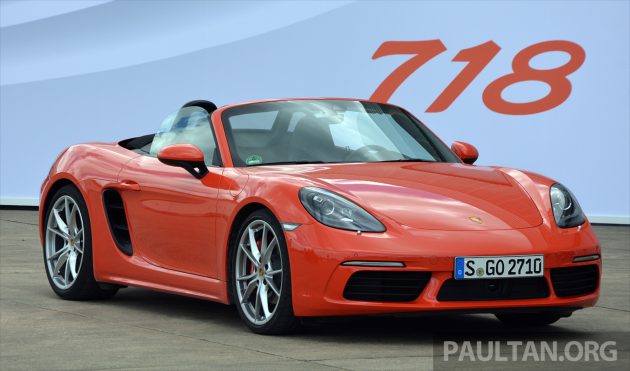
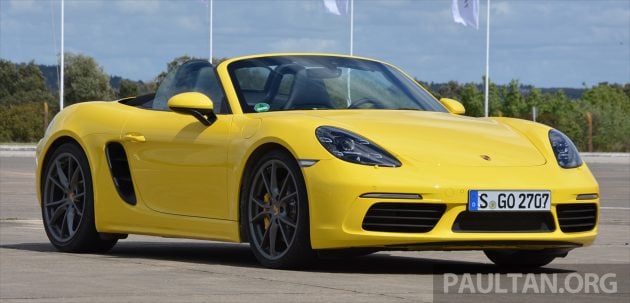
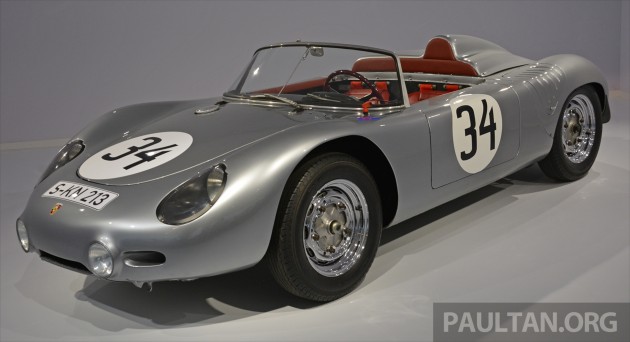
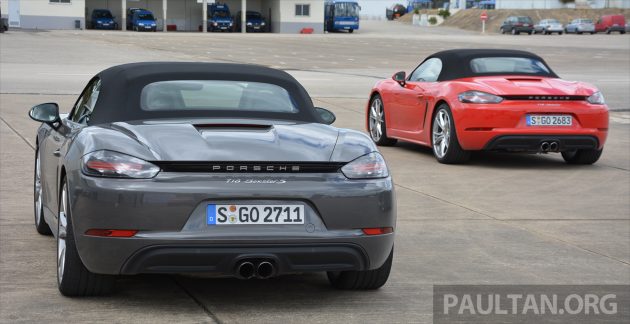













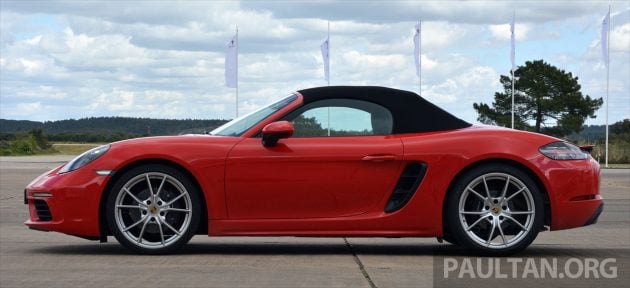
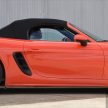
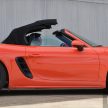


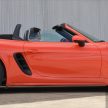






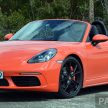
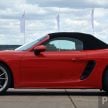
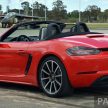
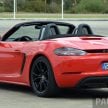
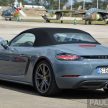
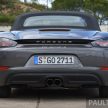
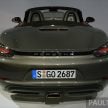
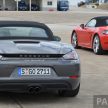
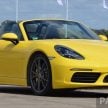
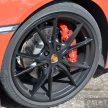
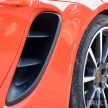
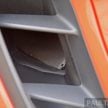
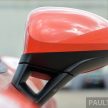

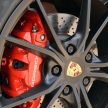
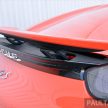
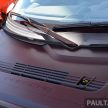
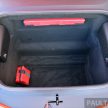
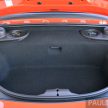
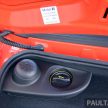
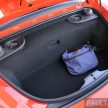
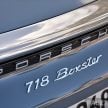
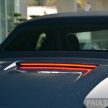
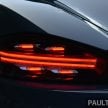
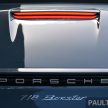
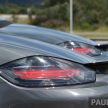
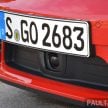
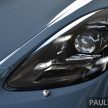
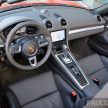

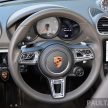
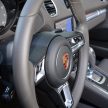
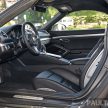

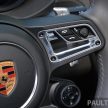
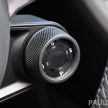
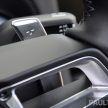
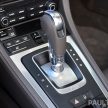
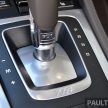
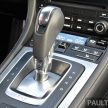
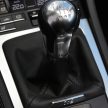
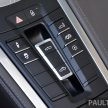
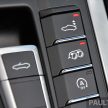
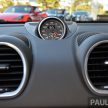
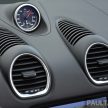
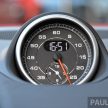
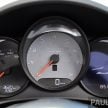
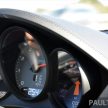

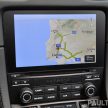
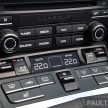
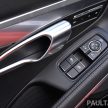
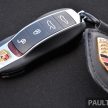
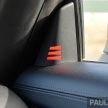
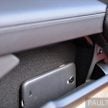
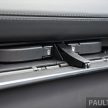
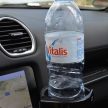
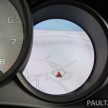

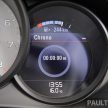
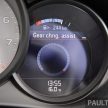
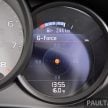
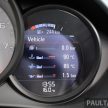
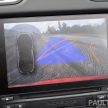

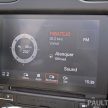


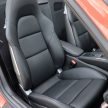
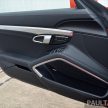
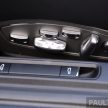

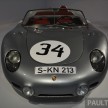
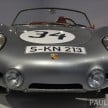
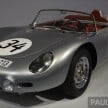
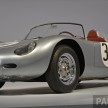
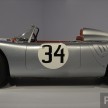
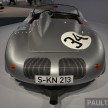
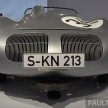
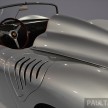
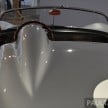
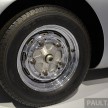
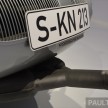
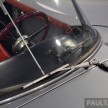

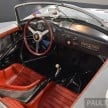
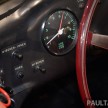
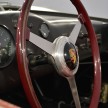
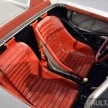
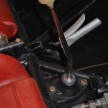
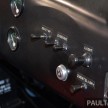
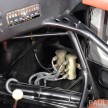



aka porsche boxster turbo… porsche impreza sti
Subaru contracted the diesel engine development out to Porsche. And Porsche was interested in using this Subaru engine in their Cayenne and Panamera.
Actually, behind the curtain all car manufacturers are working together… ;)
Can’t tell how the driving experience will be like.. Since Porsche is famous for flat 6 engines all the while… Only a test drive will tell
No mention of the increased weight of the new model when compared to the outgoing model? Normally the next gen model would be lighter especially when it has 2 cylinders less but not in this case and I’m curious to know why.
The additional cooling bits needed for a turbocharged engine (see image #89) means that the Boxster S is 35 kg heavier. That’s the weight of a very petite lady up against an extra 35 hp and 60 Nm. However, the big difference is 420 Nm available from 1,900 to 4,500 rpm, versus the 3.4L’s 360 Nm from 4,500 rpm to 5,800 rpm.
From a performance point of view, the weight gain is pretty insignificant in the big picture, IMHO.
The two turbos, intercooler and all related pipings would negate the weight loss of the lighter engine.
I am sorry, it’s a single turbo setup. Got mixed up with the engines in the 911 there.
first its BMW’s 2.5 i6 and now this..haih
Another iconic 6 cyl bites the dust. First, N52, now the Porsche Flat six. =(
Virtual gear really caught my eye. Slipping clutch to save fuel. Sounds like a clutch change very soon. Probably one every service.
But ze Germans should know better right? They are after all, an engineering powerhouse. Hang on, isn’t the infamous DQ200 dry clutch transmission German designed too?
No, the infamous DQ200 dry clutch transmission is not German designed. VW bought a license from Borg-Warner.
I know the engine is great and all but there’s nothing that could replace the iconic sound & rumble of the flat-6 porsche engine.
I guess they couldn’t name it 711 (like 911) as that number combination is already taken…
Times are changing.
It’s will b cheaper due to lesser tax for smaller engine. Yeahhh
I don’t agree
Delpha